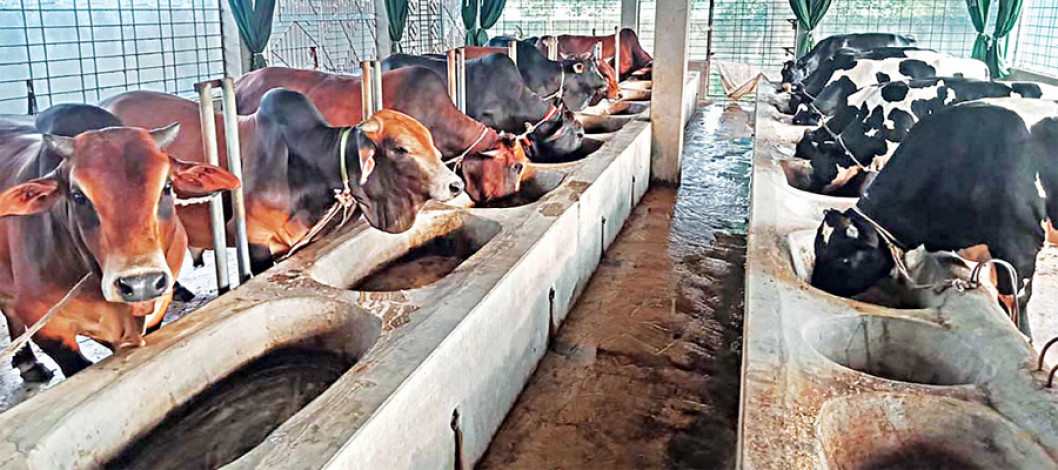
File photo
The Bangladesh cattle feed market is experiencing strong growth, driven by increasing demand for meat, milk, and dairy products, as well as government initiatives to promote modern animal husbandry practices. Local feed millers produce nearly 99% of the total demand, with the majority being consumed by poultry, while cattle feed accounts for a smaller portion. The market is forecast to continue expanding, with increasing imports of soybeans and soybean meal to meet the rising demand. Currently, the feed industry plays a major role in supplying food to the 44 crore livestock population, including cows, buffaloes, goats, sheep, donkeys, and chickens, as well as fish farms. The shift from raising backyard chickens to commercial poultry farming began in the mid-1980s but gained significant momentum in the '90s. Since then, the feed industry has started to develop on a small scale as a backward linkage sector. Significant investment came right after 2000, when the poultry sector in Bangladesh was booming, and the supply capacity exceeded the demand. See more.
Key Features of the Cattle Feed Market in Bangladesh:
Bangladesh Cattle Feed Market Overview
The cattle feed market in Bangladesh is experiencing robust growth supported by the expanding livestock industry and the increasing demand for high-quality animal nutrition products. With the growing population and rising income levels, there is a rising demand for meat, milk, and other dairy products, driving the need for nutritious and balanced cattle feed. Manufacturers are focusing on developing feed formulations tailored to the nutritional requirements of different livestock species to improve their health and productivity. Moreover, the government`s initiatives to promote modern animal husbandry practices and improve farm productivity are further fueling market growth.
Local Production:
Bangladesh's feed industry is primarily domestic, with local feed millers producing almost 99% of the total demand.
Demand:
The demand for animal feed is driven by the growing population, increasing income levels, and rising consumption of meat, milk, and other dairy products.
Imports:
To meet the growing demand, Bangladesh is increasingly importing soybeans and soybean meal to supplement domestic production.
Market Size:
The feed sector in Bangladesh is a significant market, with an estimated annual value of $2.5 billion.
Drivers of the market
The cattle feed market in Bangladesh is experiencing robust growth due to several driving factors. Firstly, the expansion of the livestock industry, driven by increasing meat and dairy consumption, is boosting the demand for high-quality cattle feed to enhance animal health and productivity. Additionally, the growing trend of commercial dairy and poultry farming is driving the need for specialized feed formulations tailored to the nutritional requirements of different livestock categories. Moreover, government initiatives to promote modern animal husbandry practices and improve farm productivity are further propelling market growth by encouraging investments in feed manufacturing infrastructure and research and development activities.
Challenges of the market
The cattle feed market in Bangladesh encounters obstacles such as fluctuating raw material prices, inadequate storage facilities, and the prevalence of counterfeit products. Despite the significant contribution of the livestock sector to the country`s economy, inefficiencies in feed production and distribution hinder market growth and agricultural productivity. The market faces challenges such as increasing raw material prices, adulteration of raw materials, and a lack of quality control in the unorganized sector.
Government Policy of the market
Government policies in Bangladesh concerning the cattle feed market may encompass measures to ensure food safety and quality standards in animal feed production. This may include regulations on the use of additives and ingredients, quality testing requirements, and initiatives to promote the adoption of modern feed technologies among farmers to improve livestock productivity. See more.
-SZK
Comment Now